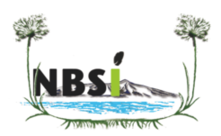Water & climate
Kenya is endowed with a great diversity of landscapes, stemming from arid deserts with sand dunes, such as the Suguta Valley, the areas around Lake Turkana and large portions of the Northern Province, to lush vegetation, rainforests and even residual mountain glaciers (Mt. Kenya, Batian Peak 5,199 m a.s.l.). Being crossed by the Equator, and therefore characterised by high irradiance all year round, the country is subject to high potential evaporation; the distribution of water sources represents a critical factor for the local climate and for the distribution of the human settlements.
The Lake Naivasha Basin has a relatively high availability of water sources; this explains its high population growth in comparison with the rest of the country. However a strong polarisation exists, with the western portion of the basin being much more arid, deforested and eroded - and therefore less populated - than the eastern highlands.
Despite a relative abundance of raw water sources, water for human consumption is generally scarce in the basin, ill-distributed, mostly of poor quality, and it is source of conflict among residents and institutions. Beside domestic water supply, also water for irrigation is almost fully dependent on the seasonal alternation of dry and wet periods; only industrial horticultural exploitations and geothermal plants can afford pumping water from lakes and/or aquifers to ensure stable availability during the dry season. These last two economic sectors arguably represent the most powerful drivers in the mobilisation of the Basin's resources. Next to them, thelife of a multitude of subsistence farmers (> 1 million people) depends from the whimsical behaviour of the Basin's climate.



